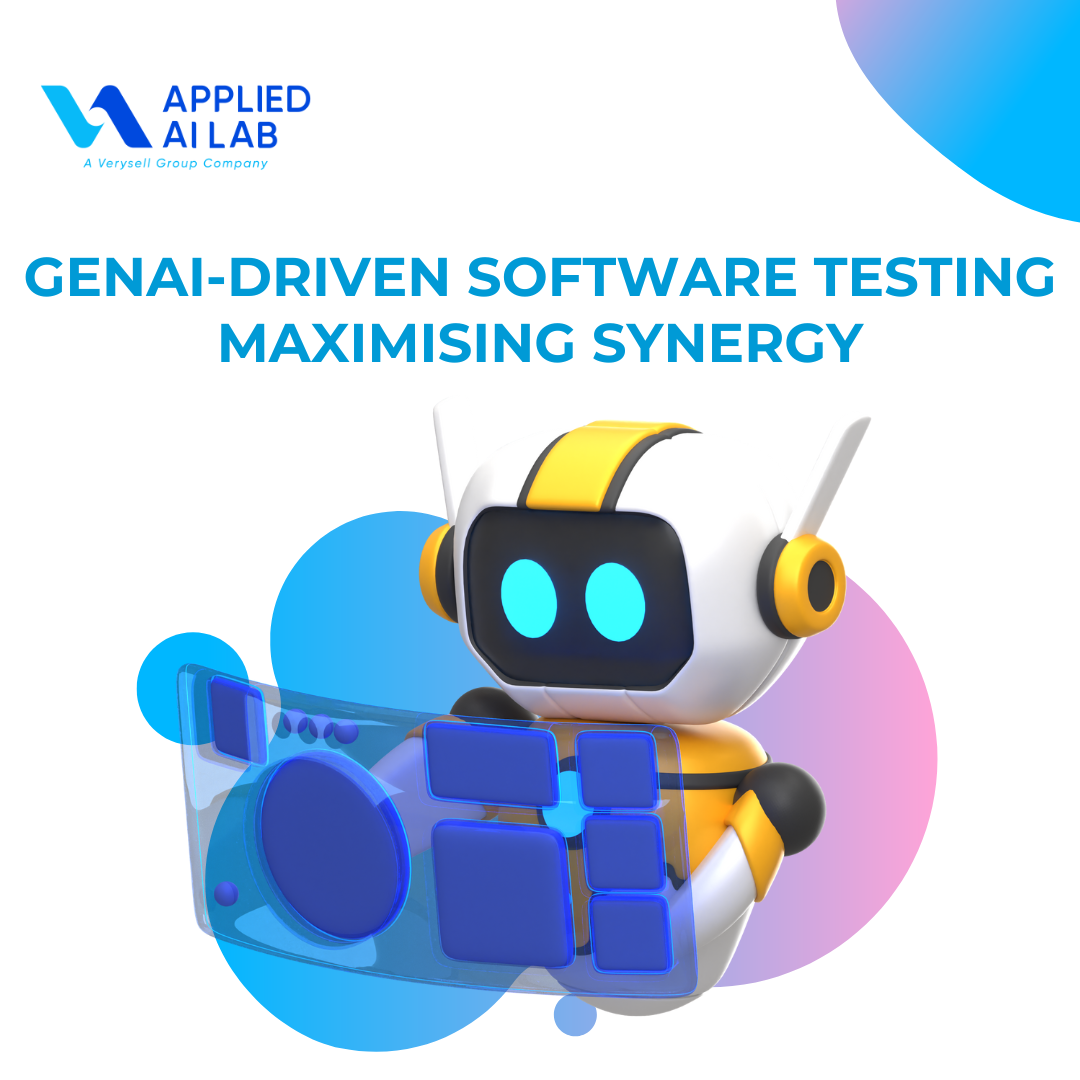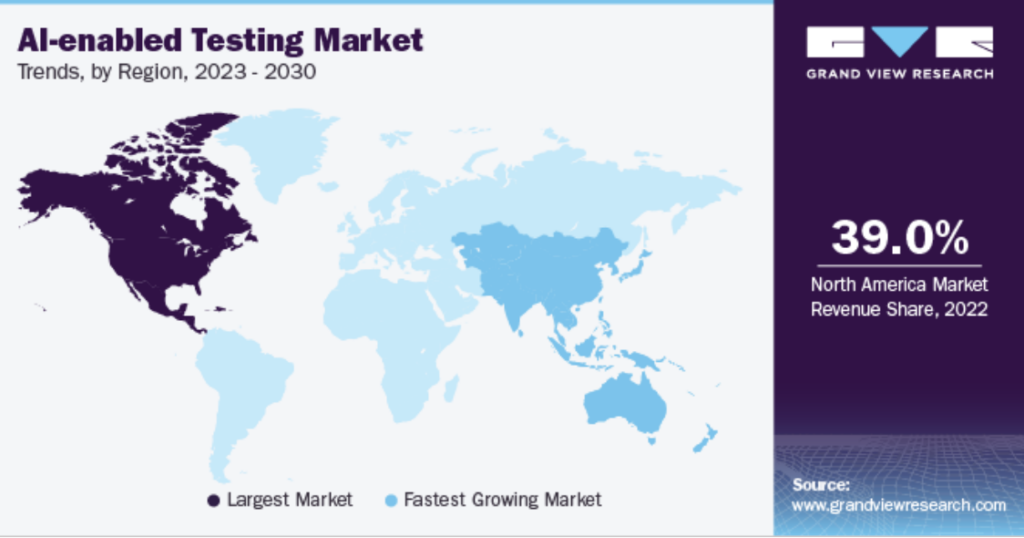Authors:
Yurii Lozinskyi (Head of Applied AI Lab @ Verysell Group),
Dao Huu Hung, Ph.D. (Chief AI Scientist, AI Lab @ Verysell Group)
Viacheslav Kostin, MBA (CEO, WislaCode Solutions).
“The real problem is not whether machines think but whether men do.” – B.F. Skinner.
Over several months, Verysell Group, AI Lab, SmartDev, and WislaCode pooled their expertise and resources in a collaborative research project. The goal was to understand how AI can enhance productivity, quality, and business outcomes in software testing. As software developers and providers of advanced QA services, our collective aim is to create synergy to maximise the impact of AI technologies on our clients.
We’ve analysed more than 40 companies in the sphere, 12 peer-reviewed academic papers, eight key industry reports, over 40 industry blogs, whitepapers, and open-access data, and interviewed eight respondents across various sectors and geographies.
In this article, we are providing the primary outcomes of the work we’ve conducted.
Key Market Findings
The AI-enabled testing market was valued at $643.5 million in 2022 and is expected to reach $2.746 billion by 2030, growing at a compound annual growth rate (CAGR) of 20.7% coverage (Fortune Business Insights, 2024). This growth is driven by increasing demand for automation and AI’s ability to optimise test execution, generate test cases, and integrate machine learning solutions.
Companies are seeking solutions that balance security and scalability. Cloud-based solutions are gaining popularity due to their accessibility and cost-effectiveness, on-premises deployments remain crucial for enterprises with strict privacy and security requirements. 61% of the market revenue in 2022 was generated by on-premises AI-enabled testing solutions (Grand View Research, 2024) and will account for a substantial market share.
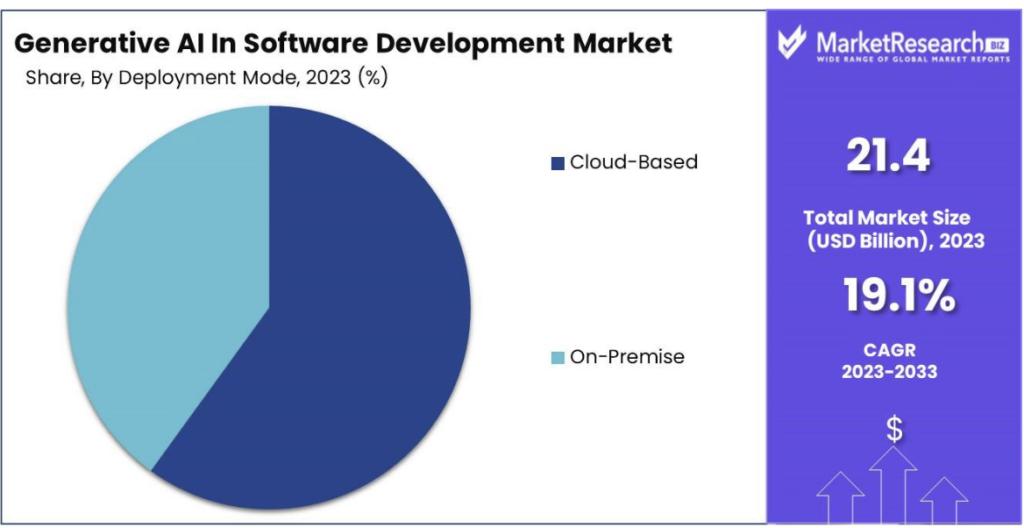
The IT, Telecom, Banking, and Finance sectors hold the largest market share, utilising AI-driven testing solutions to analyse complex data and automate processes (Fortune Business Insights, 2024). Demand is growing in the Healthcare sector, which has already become a significant player, although the application of AI in testing has its specifics.

North America leads the market in AI-enabled testing, and the Asia Pacific region is set to experience the highest growth, particularly in countries like Japan, India, and South Korea. The European market also shows strong growth potential, with Germany projected to dominate, achieving a market value of $92.8 million by 2030. The UK market is exhibiting a CAGR of 16.4% during 2023-2030. The French market would also experience a CAGR of 18.3% during 2023-2030 (KBV Research, 2024).
General Challenges in Software Testing
Despite the advent of advanced tools and methodologies in software testing, companies continue to face persistent challenges in ensuring high-quality outcomes. From unexpected changes in project requirements to insufficient test coverage, these obstacles are universal across industries and testing frameworks.
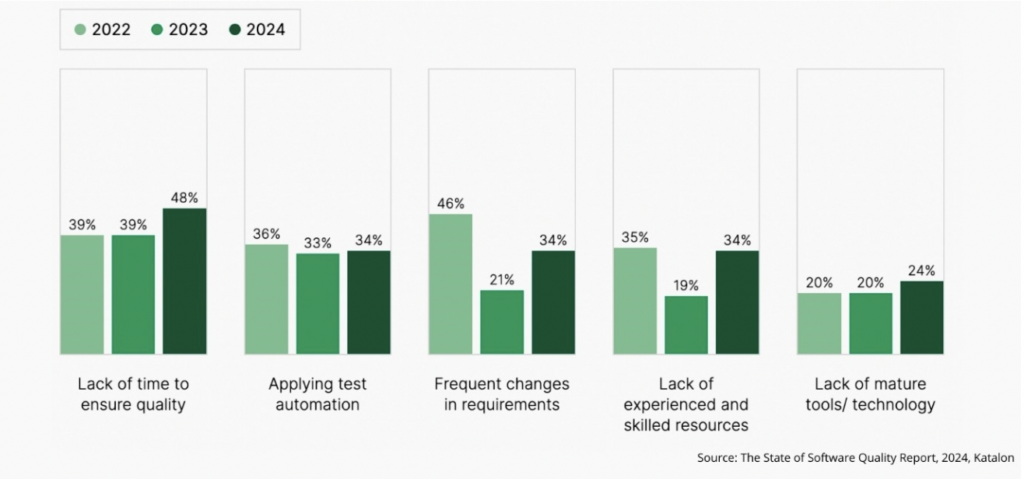
One of the most significant issues lies in the frequent last-minute changes to project requirements. These disruptions derail testing plans and increase the risk of defects going unnoticed. Testers often struggle to achieve comprehensive coverage, especially in complex systems where not all edge cases can be captured within tight deadlines.
Communication breakdowns between developers and testers add another layer of complexity. Misunderstood requirements lead to defects being discovered late, often when it’s too costly to fix. Compounding this is the challenge of testing in simulated environments, which rarely replicate the real-world conditions under which software will ultimately operate.
The pressure to deliver under tight deadlines, particularly in agile development cycles, forces testers to work with insufficient time for thorough testing. Poorly defined user stories further complicate matters, making it difficult for testers to create effective test scenarios.
Automation offers a solution, but it also introduces its own set of problems. High setup costs, ongoing maintenance, and a shortage of skilled personnel limit its widespread adoption. Automated tests require regular updates as software evolves, turning automation into a time-consuming task. As a result, many organisations find themselves with incomplete or outdated test suites.
These challenges collectively drive up the risk of bugs in production, leading to increased costs for fixes and negatively impacting user satisfaction.
Challenges in Implementing AI for Software Testing
AI-driven testing promises significant advances in automation and efficiency, but still several critical challenges limit its effectiveness in real-world scenarios. One of the major obstacles is the high upfront investment required to implement AI-based tools, particularly for smaller companies. The complexity of infrastructure and resources needed makes it difficult for many organisations to justify the cost.
Integrating AI into existing workflows is another challenge, especially for businesses relying on legacy systems or customised environments. Aligning AI frameworks with these systems often requires more work. Moreover, AI-driven tools typically rely on simulated environments that may not fully mirror real-world conditions. This leads to inaccurate results when tests that pass in controlled settings fail in actual use cases.
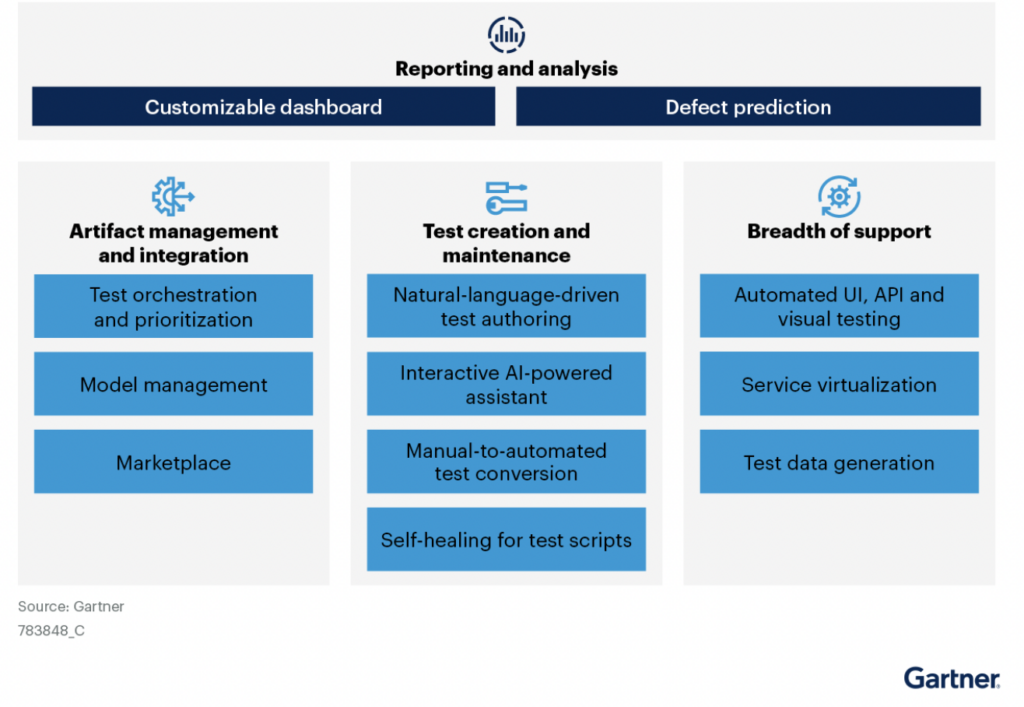
While fast, AI-generated test cases often need more specific context to accurately reflect real-world scenarios. This leads to the production of overly generic or irrelevant test cases, which require manual intervention to adjust. Empirical studies also highlight a high rate of non-compilable or logically flawed code, with more than half of AI-generated tests failing to compile and a significant percentage encountering execution errors. These issues necessitate substantial manual debugging, diminishing the expected gains in efficiency.
Readability is another issue. AI-generated tests often produce complex code for developers to understand and maintain, requiring additional effort to make the code useful for long-term applications. Even when tests are functional, the quality of coverage can be inconsistent, leading to missed edge cases or unclear results that demand further human correction.
Security and privacy concerns also hinder the adoption of AI-based testing, particularly in highly regulated industries like healthcare and finance. Companies are reluctant to use cloud-based AI solutions due to fears of exposing sensitive data.
Despite AI’s potential to streamline testing, human oversight remains necessary, at least in the current state of technology. AI models frequently struggle with complex logic or domain-specific knowledge, requiring testers to interpret results and ensure quality outcomes. AI may accelerate testing but still rely heavily on human intervention to produce reliable and meaningful results.
Insights from Interviews
Our research brought us valuable insights from eight experts across diverse industries. Their collective experience provides a unique perspective on the challenges and opportunities shaping the future of QA, software development, and digital solutions.
Industries:
- Industrial automation (Robotics, SMT equipment)
- Fintech (Payments, online loans, software development)
- Software development (Financial software)
- Global freelancing platforms
- Banking (digital solutions)
Roles: Senior Engineers, CTO (Chief Technology Officers), Project Managers, QA Managers, Infrastructure Manager.
Geographies: Japan, Europe, North America.
Resource Constraints and Manual Testing
Respondents across multiple industries highlighted a common issue: a need for more resources and personnel dedicated to testing. Employees sometimes juggle their primary responsibilities with testing roles, leading to frequent delays and limited test coverage. For example, a senior engineer at a major player in the industrial automation sector pointed out that 30% of their project time is consumed by testing. Still, resource shortages force them to skip unit and integration tests, which hampers overall software quality.
Desire for Test Automation
Many companies acknowledge the benefits of automation but still face significant barriers to implementation, including the high setup cost and the need for more skilled personnel. Respondents from the fintech and banking sectors admitted that automated testing would vastly improve efficiency, but they need help allocating time and resources to develop a robust automation framework. “We know automation will pay off in the long term, but implementing it is our biggest hurdle,” one respondent noted.
Challenges in Writing Test Scenarios
Writing comprehensive test scenarios was a recurring issue across respondents, particularly in sectors dealing with complex systems such as fintech and manufacturing. Many companies reported difficulties covering edge cases and maintaining test scenarios over time. For example, the Swiss-based software development company cited challenges correlating test cases with business priorities, leading to missed bugs in critical areas.
Time Spent on Testing
Time constraints are a critical challenge across the board. For instance, a fintech company noted that testing often exceeds the development time due to complex systems and inadequate automation. This results in extended project timelines, creating pressure on development teams and leading to missed business deadlines.
Priority Areas for AI-Powered Testing Integration
Implementation can be overwhelming for companies looking to adopt AI-driven testing. Here are some practical steps to make the transition smoother and more strategic.
1. Start Small with Automation
Begin by automating the most repetitive and straightforward test cases. Modern tools offer solutions for automating functional, regression, and API tests. Quick wins in these areas will demonstrate value and immediately reduce manual testing time.
2. Integrate AI into Existing CI/CD Pipelines
One of AI’s key benefits in testing is its ability to enhance continuous integration/continuous delivery (CI/CD) pipelines. Start by using AI to prioritise test cases based on recent code changes. This ensures that the most critical areas are tested first, saving time and focusing on high-impact areas.
3. Invest in Predictive Analytics Early
AI tools that provide predictive insights can help identify high-risk code areas before they become critical. For instance, solutions incorporating AI-driven analytics can suggest areas where defects are most likely to occur, allowing teams to focus their resources effectively.
4. Secure Buy-in with Quick Wins
Focus on demonstrating early results by using AI to generate test cases automatically. Automated test case generation and data-driven test scenario optimisation will showcase how AI can reduce manual effort and enhance testing coverage.
5. Plan for Hybrid Deployments
If security and compliance are critical for your industry, explore on-premises AI solutions in tandem with cloud-based models. This hybrid approach ensures that sensitive data remains secure while benefiting from the scalability and flexibility of cloud computing.
Examples of AI in Action
We’ve analysed over 40 industry players and dozens of test reports and investigations. The results are often shown as significant, but one should consider that sometimes the source of the GenAI software testing implementation is the solution vendor, and we can’t withdraw from consideration of the AI implementation challenges, typical errors and hallucinations shown in the research mentioned above. We conducted evaluations and tested the effectiveness of several solutions, noting that the out-of-the-box version often fails to deliver the results promised in vendor information, press releases, or expert articles. However, as experts in this sphere, we see that significant effects are reachable, but actual impact numbers will vary among different projects, environments, industries, and other specifics.
One of the standout examples of GenAI software testing implementation comes from Exadel (Girzhadovich, 2024). Their experiment with GenAI tools showcases the potential benefits of AI-driven testing when executed under favourable conditions. According to the results, deploying AI in their software testing pipeline led to a 10%- 30% decrease in time to market, allowing products to be released faster. Sprint velocity improved by 11%- 27%, enhancing productivity across development cycles.
From a quality standpoint, technical debt was reduced by 8% to 20%, and throughput increased by 15%, meaning more features were developed and delivered within the same time frame.
Code coverage increased by 15%, and unit test creation rose by 30%. Additionally, Exadel reported a 25% reduction in defects during User Acceptance Testing (UAT) and production phases, reflecting the tangible impact of AI in identifying and addressing critical bugs earlier in the process.
While these numbers are impressive, it’s essential to approach them with a degree of caution. As with any AI implementation, results can vary depending on the project’s unique circumstances. Nonetheless, Exadel’s experiment demonstrates that significant efficiency and quality gains are possible with the proper application of AI in software testing.
As of August 2024, in the Test Automation Tools category, Katalon Studio’s mindshare is 12.2%, up from 11.6% the previous year. Sauce Labs’s mindshare is 3.7%, down from 5.2% the previous year. Tricentis Tosca’s mindshare is 21.6%, up from 18.4% the previous year (PeerSpot, 2024).
The Most Popular Test Automation Tools
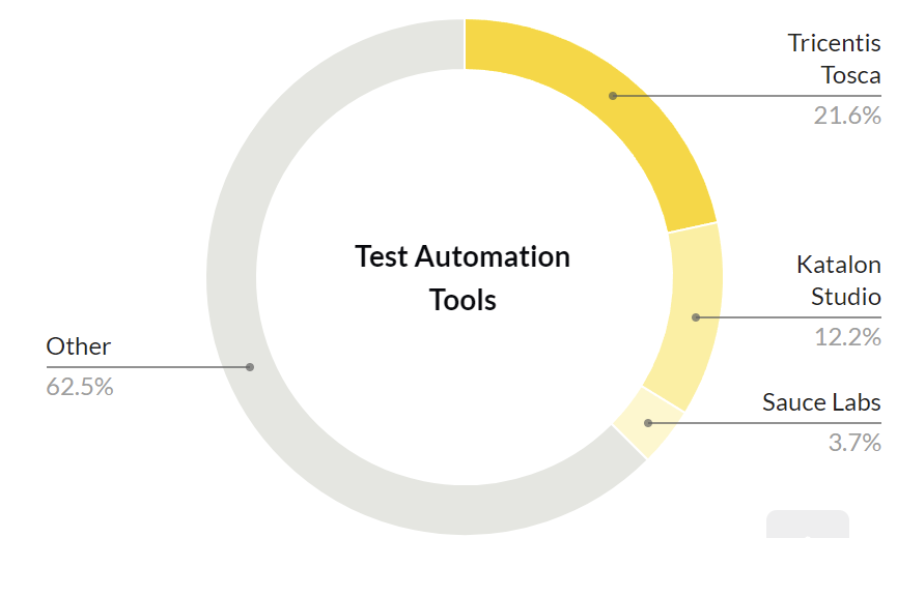
Katalon has become a go-to platform for organisations looking to scale their test automation. In a recent deployment at a financial services company, Katalon was used to automate end-to-end API and UI tests, reducing the time to create test cases by 50% through automation, achieving a 40% reduction in test execution time and increasing the defect detection rate by 30%, leading to earlier identification of issues in the development process. With its ease of integration into CI/CD pipelines, Katalon helped the team increase coverage while keeping costs low by leveraging cloud and on-premises deployments (Katalon TestGen, 2024). These achievements were made possible through using Katalon’s comprehensive suite of tools. While AI plays a role, the success was driven by the holistic application of all available features within this robust solution.
Tricentis Tosca is known for its AI-powered automation, which enhances regression testing and allows continuous testing across complex architectures. In one use case with a European bank, using model-based test automation, Tosca’s AI-driven capabilities reduced the time spent on regression tests from two weeks to three days.
The examples of AI-driven software testing across various industries illustrate the transformative potential of AI when implemented effectively. However, we suggest these benefits must be weighed against the challenges, including integration complexity and maintaining accuracy across real-world scenarios. AI in testing holds great promise, but its success depends on thoughtful deployment and ongoing oversight.
Conclusion. The Future of AI in Software Testing
AI adoption in the software testing industry is gradually gaining traction, with test case generation increasing from 35% to 37% and test data generation rising from 32% to 36%. This trend indicates a growing interest in leveraging AI for quality assurance. Yet, overall adoption remains limited, particularly among experienced professionals who cite concerns over AI tools’ reliability, security, and privacy (QAlified, 2024).
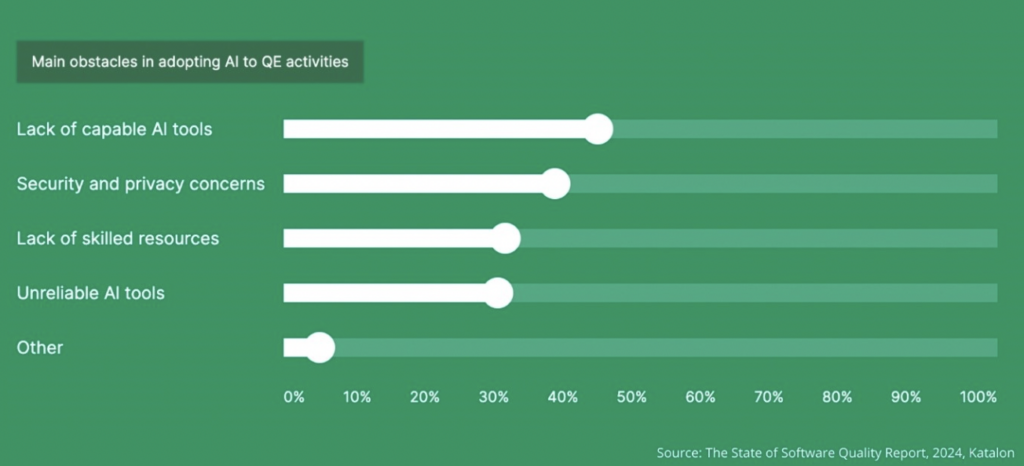
As AI becomes more integrated into testing, ethical issues must be addressed (testRigor, 2024) (Katalon, 2024). AI models can unintentionally replicate biases in their training data, potentially overlooking specific bugs or errors. Ensuring diverse and representative data is crucial to minimising bias. Additionally, privacy concerns are significant, especially when handling sensitive user data. Companies must prioritise compliance with data protection laws, secure informed consent, and maintain robust security measures to safeguard user privacy as they incorporate AI into their testing frameworks.
Our research shows that companies investing in AI-driven testing solutions will improve productivity, reduce testing cycles, and enhance security compliance. GenAI can cut time-to-market by 10-30% through faster test generation and execution. However, addressing challenges such as cost, complexity, and talent shortages will be crucial for businesses looking to implement these technologies successfully.
For companies handling mission-critical systems, one setup of automated testing pays off long-term. You set it up once and then save significantly on future projects by reducing manual effort and improving reliability.
GenAI also minimizes downtime by catching issues early, reducing the cost of changes, and improving system supportability. It makes updates smoother and cheaper, cutting down on expensive errors and ongoing maintenance.
Outsourcers in Eastern Europe and APAC can save 15-20% on project timelines and costs by automating repetitive tasks, allowing them to scale faster and more efficiently.
Verysell Group, with its subsidiary, AI Lab, is leading the next phase of AI-driven testing innovation by focusing on hybrid models, industry-specific solutions, and predictive analytics.
References
- McKinsey. (2023) McKinsey & Company. Tech services and generative AI: plotting the necessary reinvention. June 2023. Available at: https://www.mckinsey.com/~/media/mckinsey/industries/technology%20media%20and%20telecommunications/high%20tech/our%20insights/tech%20services%20and%20generative%20ai%20plotting%20the%20necessary%20reinvention/tech-services-and-generative-ai-plotting-the-necessary-reinvention.pdf?shouldIndex=false (Accessed 18 June 2024)
- Dante. (2023) Melegati, J., Guerra, E.: Dante: a taxonomy for the automation degree of software engineering tasks. arXiv. Available at: https://arxiv.org/pdf/2309.14903 (Accessed 19 June 2024)
- BrowserStack. (2023) Challenges faced by QA: BrowserStack Guide. Available at: https://www.browserstack.com/guide/challenges-faced-by-qa (Accessed 3 July 2024).
- Haribi, B. (2023) Set ways to optimise the cost of software testing. LinkedIn. Available at: https://www.linkedin.com/pulse/set-ways-optimize-cost-software-testing-bechir-haribi/ (Accessed 3 July 2024).
- Zuci 7 steps. (2023) 7 steps to optimise the cost of software testing. Available at: https://www.zucisystems.com/blog/7-steps-to-optimize-the-cost-of-software-testing/ (Accessed 3 July 2024).
- Zuci Systems. (2023) Software testing costs. Available at: https://www.zucisystems.com/blog/software-testing-costs/ (Accessed 3 July 2024).
- VentureBeat. (2023) Report: 97% of software testing pros are using automation. Available at: https://venturebeat.com/programming-development/report-97-of-software-testing-pros-are-using-automation/ (Accessed 3 July 2024).
- Kobiton. (2022) The state of software test automation in 2022. Available at: https://info.kobiton.com/hubfs/State%20of%20Software%20Test%20Automation%202022/The%20State%20of%20Software%20Test%20Automation%20in%202022%20-%20Kobiton.pdf (Accessed 3 July 2024).
- Yuan. (2024) Yuan, Z., Liu, M., Ding, S., Wang, K., Chen, Y., Peng, X., & Lou, Y. No more manual tests? Evaluating and improving ChatGPT for unit test generation. arXiv. Available at: https://arxiv.org/pdf/2305.04207v3 (Accessed 23 July 2024).
- Cser. (2024) Cser T. Generative AI in software testing. Functionize. Available at: https://www.functionize.com/automated-testing/generative-ai-in-software-testing (Accessed 23 July 2024).
- Procter. (2024) Procter A. Generative AI is changing software testing and automation for the better. Okoone. Available at: https://www.okoone.com/spark/strategy-transformation/generative-ai-is-changing-software-testing-and-automation-for-the-better/ (Accessed 23 July 2024).
- McDaniel. (2023) McDaniel T. The role of generative AI in testing. Virtuoso. Available at: https://www.virtuoso.qa/post/the-role-of-generative-ai-in-testing (Accessed 23 July 2024).
- testRigor. (2024) Generative AI in software testing: reshaping the QA landscape. testRigor. Available at: https://testrigor.com/generative-ai-in-software-testing/ (Accessed 23 July 2024).
- Shakebugs. (2023) The evolving trends in mobile app testing. Shakebugs. Available at: https://www.shakebugs.com/blog/mobile-app-testing-trends/ (Accessed 31 July 2024).
- Jakubiak. (2023) Jakubiak N. API Testing with Generative AI. Parasoft. Available at: https://www.parasoft.com/blog/api-testing-with-generative-ai/ (Accessed 31 July 2024).
- Bloomberg. (2023) Generative AI to Become a $1.3 Trillion Market by 2032, Research Finds. Bloomberg. Available at: https://www.bloomberg.com/company/press/generative-ai-to-become-a-1-3-trillion-market-by-2032-research-finds/ (Accessed 7 August 2024).
- AI News. (2023) The Market Size in the AI Market is Projected to Reach $184bn in 2024. Artificial Intelligence News. Available at: https://www.artificialintelligence-news.com/news/the-market-size-in-the-ai-market-is-projected-to-reach-184bn-in-2024/ (Accessed 7 August 2024).
- Fortune Business Insights. (2024) AI-enabled Testing Market Size, Share & COVID-19 Impact Analysis. Fortune Business Insights. Available at: https://www.fortunebusinessinsights.com/ai-enabled-testing-market-108825 (Accessed 7 August 2024).
- Grand View Research. (2024) AI-enabled Testing Market Size, Share & Trends Report. Grand View Research. Available at: https://www.grandviewresearch.com/industry-analysis/ai-enabled-testing-market-report (Accessed 7 August 2024).
- Global Market Insights. (2024) Software Testing Market Size, Share & Trends Report. Global Market Insights. Available at: https://www.gminsights.com/industry-analysis/software-testing-market (Accessed 11 August 2024).
- QAlified. (2024) 2024 Trends in Software Testing. QAlified. Available at: https://qalified.com/blog/2024-trends-in-software-testing/ (Accessed 12 August 2024).
- ZAPTEST. (2024) Computer Vision is the Future of Software Testing Automation: A History of Past, Present, and Future. ZAPTEST. Available at: https://www.zaptest.com/computer-vision-is-the-future-of-software-testing-automation-a-history-of-past-present-and-future (Accessed 12 August 2024).
- Basireddy, M. R. (2022) Utilize AI Algorithms to Generate Realistic and Diverse Test Data Sets for API Testing. Journal of Artificial Intelligence & Cloud Computing. Available at: https://www.onlinescientificresearch.com/articles/utilize-ai-algorithms-to-generate-realistic-and-diverse-test-data-sets-for-api-testing.pdf (Accessed 13 August 2024).
- IEEE. (2024) Synthetic Data Generation and Handling Data Imbalance for Mobile Financial Transactions. IEEE Xplore. Available at: https://ieeexplore.ieee.org/document/10546178 (Accessed 13 August 2024).
- ACM. (2024) Generative AI for Automated Software Testing: Opportunities and Challenges. ACM Digital Library. Available at: https://dl.acm.org/doi/10.1145/3597503.3639157 (Accessed 13 August 2024).
- MarketResearch.biz. (2024) Generative AI in Software Development Market: Size, Share, and Forecast. MarketResearch.biz. Available at: https://marketresearch.biz/report/generative-ai-in-software-development-market/ (Accessed 13 August 2024).
- Gartner. (2024) Generative AI in Software Development: Trends and Insights. Gartner. Available at: https://www.gartner.com/doc/reprints?id=1-2GSTIHDG&ct=240301&st=sb (Accessed 13 August 2024).
- PeerSpot. (2024) Katalon Studio vs Sauce Labs vs Tricentis Tosca: Product Comparison. PeerSpot. Available at: https://www.peerspot.com/products/comparisons/katalon-studio_vs_sauce-labs_vs_tricentis-tosca (Accessed 18 August 2024).
- TechReport. (2024) Software Testing Market Statistics 2024. TechReport. Available at: https://techreport.com/statistics/software-web/software-testing-market-statistics-2024/ (Accessed 21 August 2024).
- KBV Research. (2024) Europe AI-Enabled Testing Market: Analysis and Forecast. KBV Research. Available at: https://www.kbvresearch.com/europe-ai-enabled-testing-market/ (Accessed 21 August 2024).
- KBV Research Press. (2024) AI-Enabled Testing Market: Press Release. KBV Research. Available at: https://www.kbvresearch.com/press-release/ai-enabled-testing-market/ (Accessed 21 August 2024).


